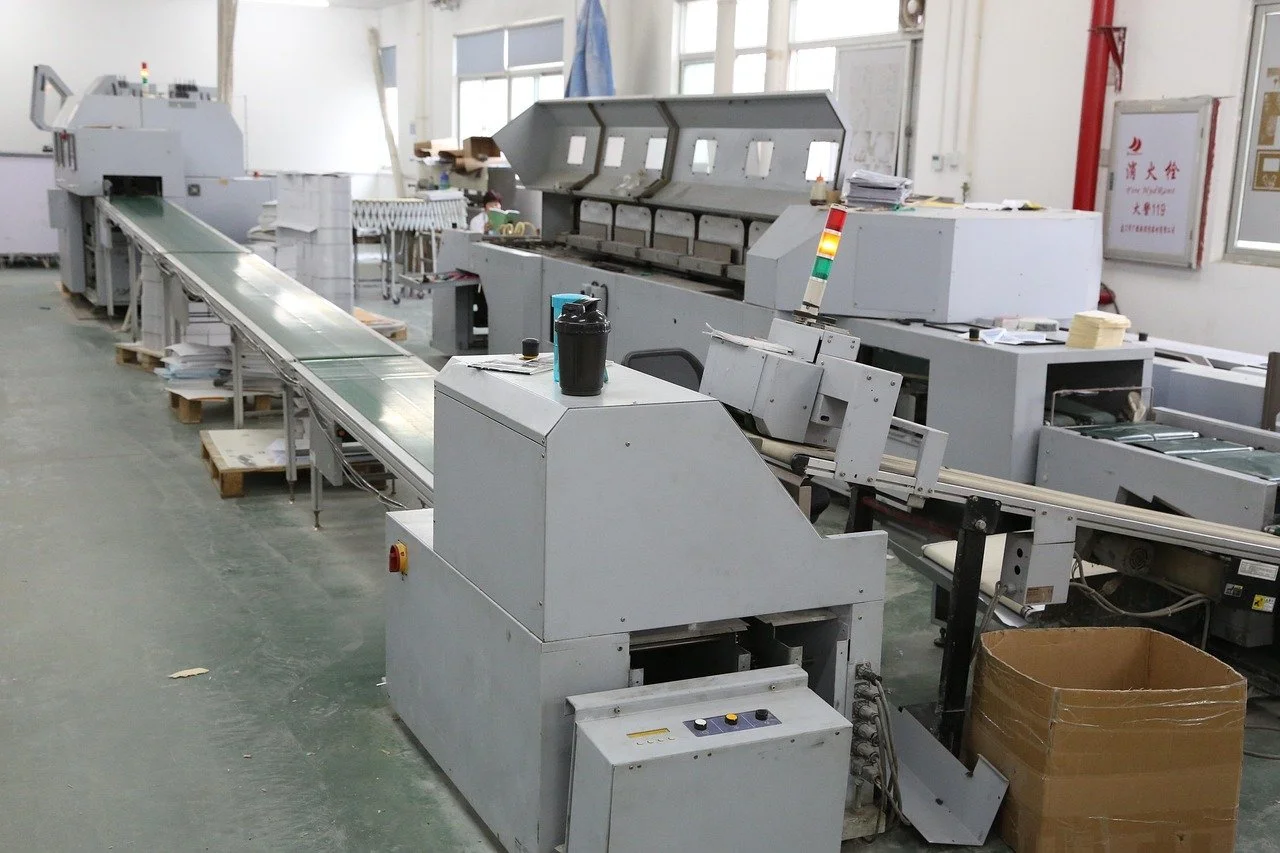France's 2025 Ink Ban Is Bigger Than You Think
What it means for art books, packaging, and the future of sustainable publishing
From January 1, 2025, France enforced a nationwide ban on the use of mineral oil-based inks, specifically targeting MOAH (Mineral Oil Aromatic Hydrocarbons) and MOSH (Mineral Oil Saturated Hydrocarbons).
This might sound like a technical, behind-the-scenes policy shift. But for publishers, designers, and artists, especially those working on high-quality printed materials like art books, collector editions, and packaging, it’s a very real change with both challenges and opportunities.
And we’re starting to see it directly affect what we’re doing.
Open ink tins in various colours, including green, purple, and white, used for offset printing in a commercial printshop. Photo by Painezhang.
What’s Changing?
France's new regulation prohibits the use of certain mineral oil constituents in all printing inks used for printed materials distributed in France, regardless of where they’re manufactured.
The focus is on:
MOAH: Linked to potential genotoxic and carcinogenic risks.
MOSH: Known to accumulate in human tissue over time.
These hydrocarbons have been commonly used in conventional inks, particularly in offset and packaging print, and can migrate into food products or come into direct skin contact—raising serious health concerns. The move is part of France’s Circular Economy Law (AGEC) and broader environmental reforms.
This is not just about newspapers or food wraps. It applies to:
Book interiors and covers
Slipcases, belly bands, and promotional inserts
Printed packaging and shipping materials
Offset printing machine in action. Photo by Painezhang.
Why It Matters to Us
At Soi Books, we produce limited editions, artist books, and visual culture titles. Objects meant to last, to be touched, admired, and collected. Many of these are printed in the EU, and several are distributed across France via museum shops, galleries, and bookstores.
This regulation means we and others in our space need to rethink how we put projects together.
Here’s how it breaks down:
The Positives
Better for health and the environment
Mineral oil-free inks eliminate one of the more toxic and persistent substances in the print ecosystem.Technical quality is solid
Recent tests have shown mineral oil-free inks offer equal or better performance in areas like colour fidelity, drying times, and deinkability (key for recyclability).It forces transparency
Working with mineral oil-free suppliers helps clean up grey areas in sourcing especially for packaging and promotional print.Sustainability as a selling point
Being compliant with France’s standard gives us a clear, marketable position with eco-conscious collectors, curators, and clients.
The Drawbacks
Increased cost
Mineral oil-free inks currently cost 30–50% more than conventional ink sets. That impacts budgeting for both short-run books and bulk print orders.Supply chain complexity
It’s not enough for your book printer to comply. If the box, wrap, or even label was printed with mineral oil-based inks, you could be blocked from the French market.Fragmented regulation
France is the first to implement this at a national level. It’s not yet harmonised across the EU, so publishers working across multiple territories face inconsistent rules.
Perfect binding machine in a commercial print facility, used for assembling and finishing printed books. Photo by Paine Z.
What Others Are Experiencing
Printers and suppliers across Europe are under pressure. “This law creates a lot of uncertainty,” says Laetitia Reynaud from Intergraf, a major European printing group. “Gravure printers especially are worried because it’s still unclear whether the new rules apply to them.” Some larger companies, like Germany’s Druckhaus Mainfranken (which runs Flyer Alarm), have already made changes. They now make sure everything they send to France uses inks that meet the new limits. But for smaller printers, it’s harder. They’re facing higher costs and complicated changes to how they work. Flint, a leading ink manufacturer, says their new mineral oil-free inks work just as well or even better but getting there took time and money. Overall, the industry is moving in a safer, more transparent direction, but it’s not an easy transition.
What We're Doing
As of Q3 2024, we’ve started taking early steps toward understanding and adapting to the new regulations:
We’d like to begin testing mineral oil-free inks on key projects but even getting a handle on what that workflow looks like takes time.
We also need to talk to our suppliers and understand whether they’re across these changes or if they’re figuring it out alongside us.
We’re exploring sustainable finishes and recycled stocks that are compatible with the new ink systems.
This isn’t just about ticking a compliance box. It’s about shifting how we work making our publishing process more transparent, responsible, and resilient for the long haul.
Final Thoughts
We’ll continue to see how this unfolds, especially if EU-wide standards begin to take shape. In the meantime, this law sends a clear signal: the materials we use, and how we use them, matter more than ever.
If you’re an artist, printer, or publisher thinking about how to future-proof your practice or working on a project that needs to cross borders, we’d love to hear from you.
Get in touch to learn how we’re navigating the shift, or to start something new together.



